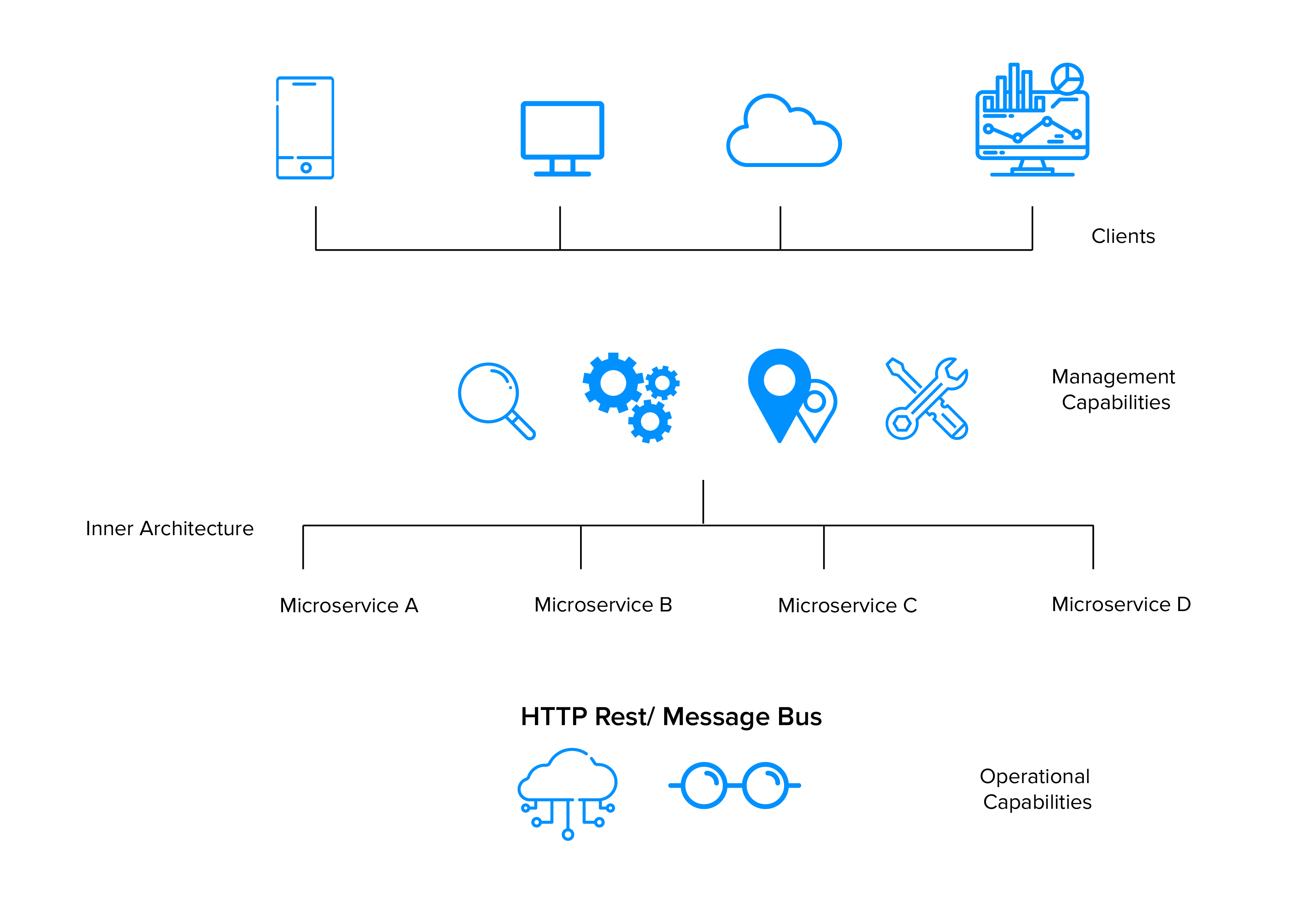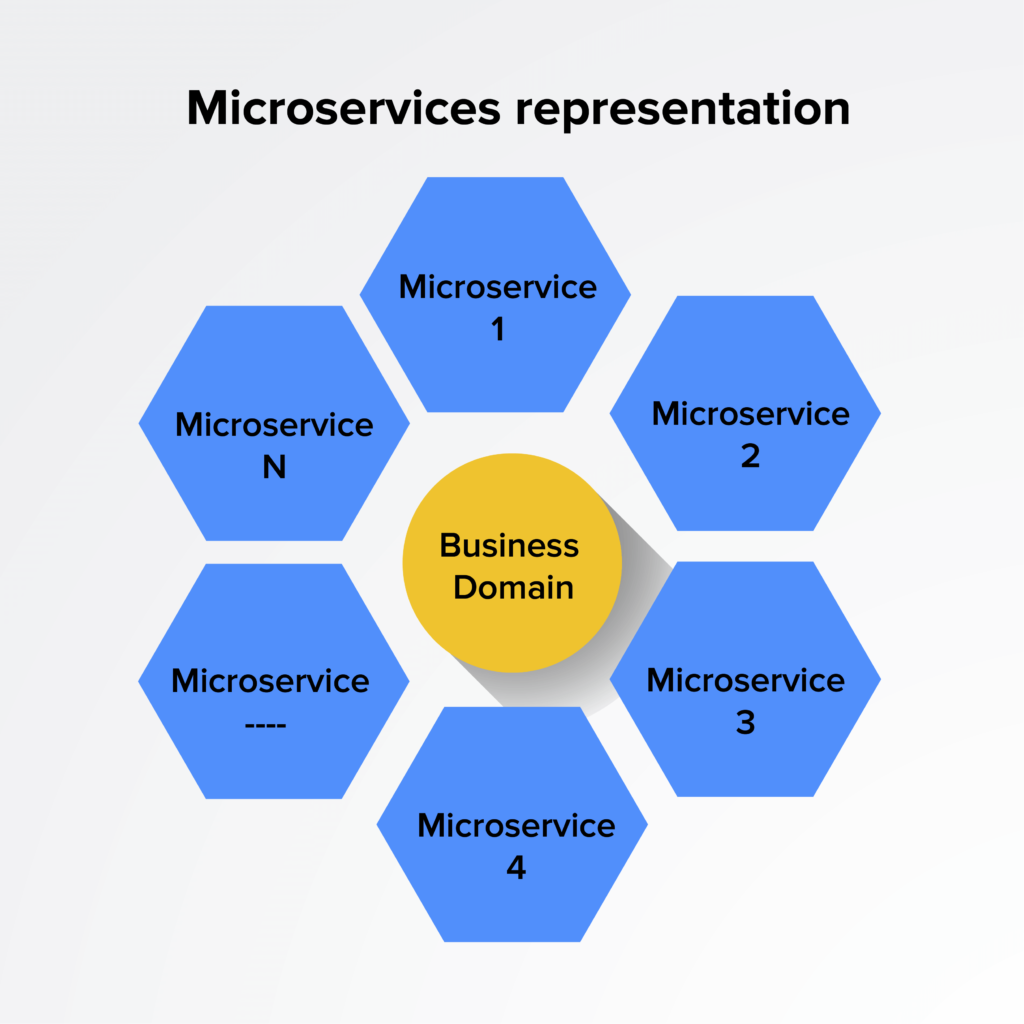- What is Microservice Architecture?
- Why Should You Use Microservice Architecture?
- How Big Companies Are Using Microservice Architecture to Their Advantage?
- How To Implement Microservice Architecture?
- Conclusion - Should You Go For Microservice Architecture?
- FAQs About Microservice Architecture
- Why do we need microservice architecture?
- How microservice architecture works in simple words?
- Why should I use microservices?
- How do you build a microservice architecture?
Microservice Architecture has become a hot topic in the software backend development world. It is one of those architectural patterns which has emerged from the world of domain-driven design, continuous delivery, platform and infrastructure automation, polyglot programming, and scalable systems.
Several big companies like Netflix and Amazon have also favored microservice architecture as it adds value to their business and helps with the development, scalability, and continuous delivery of their services. As per a report, 73% of firms using or planning to use microservices see it as extremely beneficial for building next-generation services and applications.
In this blog, we are going to understand microservice architecture and discuss the benefits of microservices architecture in your business.
What is Microservice Architecture?
“A loosely coupled service-oriented architecture with bounded contexts to make sure you break your problem into the right chunks” – Adrian Cockcroft
Microservice Architecture is an architectural approach wherein software applications are built as a collection of loosely coupled services, unlike monolithic software applications. Each microservice can be created independently from the other, which means individual service can function without negatively impacting the others. They can even have their own programming language. These services interact with each other using APIs to solve a larger complex business problem.

Enterprise mobile app developers leverage the capabilities of this architecture, especially for complex applications, and to reduce app development costs.
In short, it is undoubtedly one of the best enterprise architectures in today’s modernized world that supports multiple platforms and devices. Major players like eBay, Netflix, Twitter, and Amazon have already started leveraging this new style of developing applications for some time now.
Why Should You Use Microservice Architecture?
After understanding the microservices software development architecture, let’s dive deep and discuss the advantages of microservice architecture in your next business project.
- Increased development speed: Microservices are often small in size, therefore, adding new features to them are usually faster.
- Separate components: Microservice architecture comprises loosely coupled components. These components can easily be developed, replaced, and scaled individually.

- Application scaling: Microservices based application architecture can offer horizontal scaling within seconds, if they are carefully deployed using Kubernetes, Docker, or other infrastructure. In fact, companies like Netflix, Spotify, Uber, Google have moved from monolithic to microservice architecture because of horizontal scaling. Also, for instance, if one microservice is CPU intensive, it could be implemented in a CPU optimized programming language, while other microservices can be implemented in an interpreted language like Java.
- Change technology stack with ease: Microservice lets agile application development companies to easily change technology stack and avail larger benefits at the same time. There is no hard and fast rule to use a particular stack as there is no dependency.
- Development scaling: As microservice can be developed independently, developer scalability is much better. Why so? Because different agile software developers/teams can work on different codes without bumping into each other’s code. So, agile software development companies can easily hire more developers and scale up agile software development services.
- Easy to understand: In a distributed environment wherein some of the team members are geographically dispersed, microservice architecture can help DevOps team understand the entire functionality of a service as it is not built on a single package. Learn how Agile and DevOps together can help your business grow.
But there are challenges, too
Microservice architecture offers a lot of benefits, but you can’t ignore the challenges it comes with. Moving from monolith to microservice means a lot more management complexity – a lot more services created by a lot more teams and deployed in a lot more places. Logging data is more voluminous and can be inconsistent across different services. Moreover, too many alternative languages can make your solution potentially difficult to maintain. A DevOps approach can solve many of the problems, but DevOps adoption has challenges of its own.
Nevertheless, these challenges aren’t stopping businesses from adopting a microservice architecture. As per a survey conducted by IBM, 56% of current non-users are likely or very likely to adopt microservices within the next two years.
How Big Companies Are Using Microservice Architecture to Their Advantage?
As mentioned above, many big industry players like Amazon and Netflix have been using microservice architecture to create microservices-based apps as they bring a whole range of benefits to their organizations. Let’ see how they are making use of this architectural pattern to their advantage:
- Netflix: Netflix shifted from monolithic to microservice architecture. How did it happen? Well, in 2008, a program had a missing semicolon, which brought down Netflix’s website, and it took several hours to recover from it. Around the same time, Netflix also realized that they were finding it hard to scale. While the popularity of Netflix was growing at a rapid rate, the company wasn’t quick enough to build data centers. This limitation started to hamper their growth.

Therefore, in 2009, Netflix steadily moved from monolithic to microservice architecture. The company began its transition to AWS cloud-based microservice architecture. Netflix moved to the microservice architecture by adopting it in December 2011. With this drastic step, Netflix now had hundreds of microservices instead of a giant monolith application that they had earlier. In December 2015, Netflix microservice architecture featured an API gateway that handled 2 billion API requests daily.
- Amazon: Back in the early 2000s as Amazon was growing, it started facing a lot of issues, which were impacting the overall productivity. An ample amount of time was spent on merging developer changes into a master version of the product. However, Amazon was quick to realize that operating like this wasn’t sustainable. So, they decided to move to microservice architecture, where each service is responsible for a single purpose as it is reachable via web service APIs.
Once Amazon moved to microservice architecture, this paved the way to success for Amazon

Now we know how major giants have achieved success in no time with microservice architecture pattern, let’s move on to the best practices to use while implementing this pattern.
How To Implement Microservice Architecture?
You should keep in mind the following practices if you want to implement microservices architecture based applications in your next business project:
- Use RESTful APIs to implement this architecture in the best way possible
- Organize your team around your microservices
- Make sure beforehand whether this architecture will work for you
- Define your microservices carefully
- Invest in high-quality DevOps and application monitoring solutions
- Use Domain-Driven Design to design your microservices
- Plan for data storage for each microservice
[Also Read: Serverless Vs Microservices – Which architecture should businesses choose?]
Conclusion – Should You Go For Microservice Architecture?
It is true that designing and implementing microservice architecture is not an easy task and needs a paradigm shift compared to monolithic architecture. But despite that, microservice is a very useful and handy tool for the mobile app development process. For large enterprises, microservice architecture is the only way to tackle complexity and to get an edge over the competition. For startups and small businesses, microservices in mobile app development can bring long-term benefits. It is worth mentioning that early adopters of microservice architecture like Amazon, Twitter, and Netflix have amassed massive success with this pattern.
At Appinventiv, we have helped many small-scale companies, medium-sized businesses, and enterprises to come up with the right architecture pattern. Please spare a minute or two from your valuable time and let us help you to realize the potential that your next architectural project requires with our enterprise software development company in California.
FAQs About Microservice Architecture
Why do we need microservice architecture?
Microservice helps to create more logical applications that run faster, reduce development costs and help scale up.
How microservice architecture works in simple words?
The main idea behind a microservice architecture is that an application using microservices architecture is simpler to build and maintain when they are broken down into small pieces that work seamlessly together. An application built with microservices runs faster without any complexity.
Why should I use microservices?
Microservices make it easy to debug, test, and deploy applications and also allows you to optimize resources. It also allows you to use code from existing libraries instead of reinventing the code.
How do you build a microservice architecture?
For building a microservice architecture, organize your teams the right way and keep communication between services with RESTful APIs. Then divide the data structure and emphasize monitoring to ease microservices testing.


Excellence Together

Mobile CRM - The Key to Driving Success in the Modern Business Landscape
In a world where business agility translates to success, embracing Mobile CRM can be a game-changer. It provides immediate access to customer data, significantly boosting your responsiveness and operational effectiveness in a competitive market landscape. These systems ensure that relevant customer information is just a tap away, enhancing decision-making, optimizing customer interactions, and significantly boosting…

Enterprise CRM - Benefits, Features, Platforms, and Implementation Process
In today’s cutthroat competitive age, businesses are increasingly adopting digital platforms and expanding their operations. At the core of these activities lies data—specifically, user-generated data, which is essential for reaching more customers and making day-to-day decisions. However, the challenge remains: How can businesses analyze and leverage such a large volume of data? This is where…








